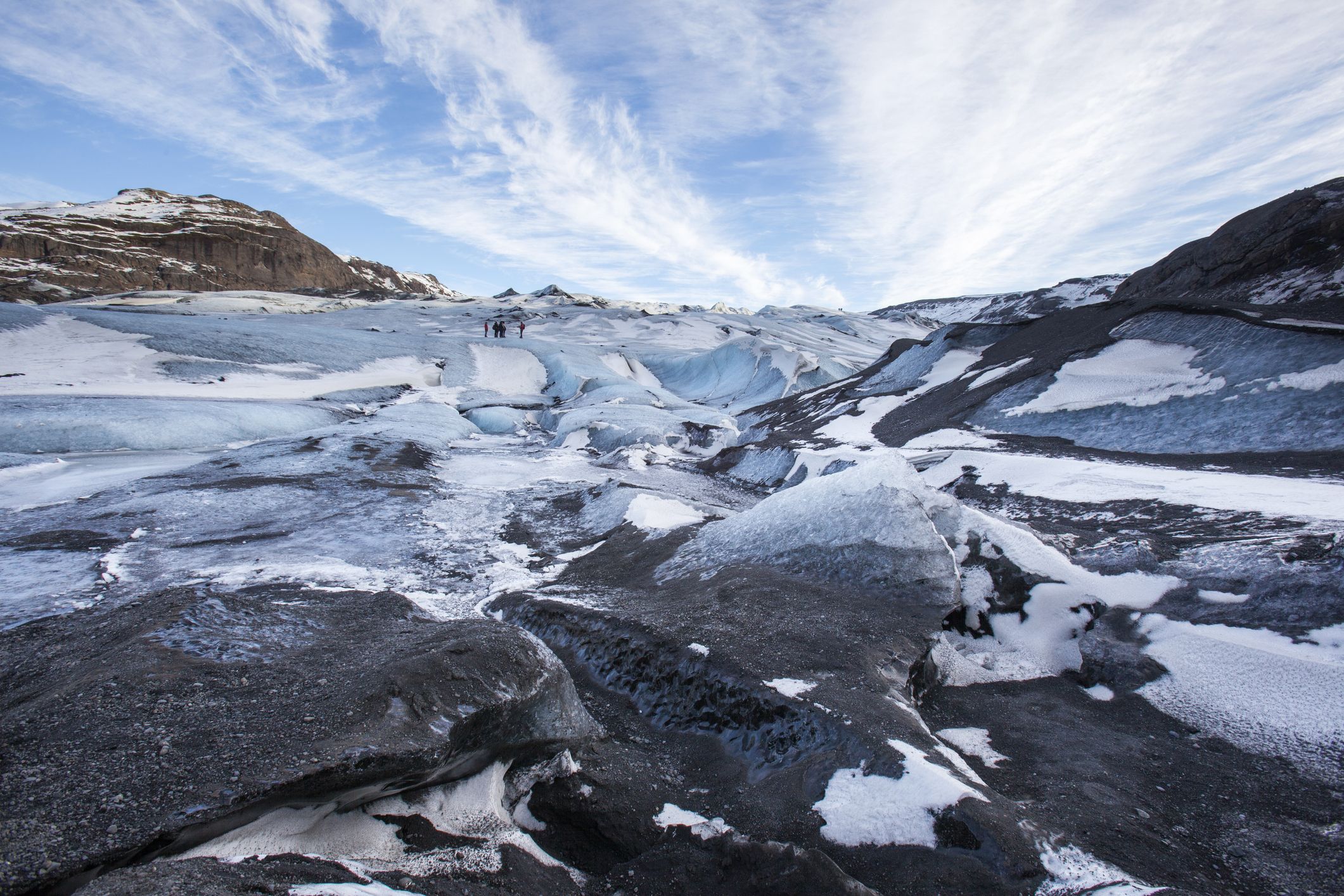
Huge amounts of methane are being released from a glacier connected to Katla—one of Iceland's largest and most active volcanoes.
Researchers found that up to 41 tonnes of methane is released through meltwater from the Sólheimajökull glacier every day over the summer months. The study, published in Scientific Reports, is the first to show methane is released from glaciers on such a large scale.
Methane is a greenhouse gas far more potent than carbon dioxide. It is becoming of increasing concern because of its potential to contribute to climate change. In Arctic regions, methane is locked up in permafrost—ground that is permanently frozen. As global temperatures increase, the soil thaws and methane is released, contributing to further warming.
Identifying and understanding previously unrecognized sources of methane—like the latest study on glaciers—is hugely important to climate change models. If this volcano and glacier is representative of other similar systems, it could mean masses of previously unaccounted methane are being released into the atmosphere.
"At the moment, this large quantity of methane has only been observed to be released from Sólhiemajökull glacier in Iceland," study author Peter Wynn, from the U.K.'s University of Lancaster, told Newsweek. "However, where glaciers and volcanoes interact together in similar fashion elsewhere in the world, there is every possibility methane could also be released there too. There is increasing evidence for large zones of geothermal activity beneath the world's biggest ice sheets in Antarctica and Greenland, so there could be a large amount of methane being produced there."
The team took water samples from the edge of the lake in front of the glacier to measure the concentrations of methane. They found that compared to other nearby rivers and sediments, the levels were far higher. The highest concentrations of methane were at the point where the river emerges from beneath the glacier.
Further analysis allowed them to find the exact sources of the methane—microbiological activity on the glacier bed. When methane comes into contact with oxygen it normally combines to form carbon dioxide. However, at Sólheimajökull when the meltwater reaches the bed of the glacier it comes into contact with gasses from the volcano. These gases lower the oxygen content in the water, allowing the methane produced to be dissolved and transported out of the glacier.
The volcano, the team believes, provides the conditions necessary for microbes to thrive and release methane into the meltwater—the geothermal heat makes the volcano into a giant incubator.
Researchers say that while the study only focuses on Sólheimajökull and Katla, there are many other ice-covered active volcanoes that could produce methane in a similar way. The team now hopes to carry out similar research in Greenland or Antarctica. "Increasing evidence for large geothermal areas beneath these ice sheets suggests methane production could be extensive," Wynn said. "If these geothermal systems are hydrologically connected, the release of this methane could be on a much greater scale than observed even at Sólhiemajökull."
If this is the case, and global warming continues at its current rate, the consequences could be concerning. "If warming continues, several things could happen. The increased amount of meltwater produced in a warming world will access the bed of the glacier. This may encourage greater connectivity with volcanic and geothermal areas buried beneath the ice. A hydrologically connected geothermal area means the methane can escape to the atmosphere rather than being trapped beneath the ice.
"[Another consequence could be that] as ice thins, this releases pressure on volcanic and geothermal systems beneath, and will likely drive an increase in eruptive activity and heat fluxes. This in turn will encourage more methane generation at the bed of the glacier. However, the whole process may also be self-limiting as without the ice, the conditions for methane production are removed."
In a statement, the University of Iceland's Andri Stefánsson, who was not involved in the study, said: "These findings provide important and new information on the origin and fluxes of methane at the Earth's surface and the significance of this greenhouse gas to the atmosphere from such systems."
Uncommon Knowledge
Newsweek is committed to challenging conventional wisdom and finding connections in the search for common ground.
Newsweek is committed to challenging conventional wisdom and finding connections in the search for common ground.
About the writer
Hannah Osborne is Nesweek's Science Editor, based in London, UK. Hannah joined Newsweek in 2017 from IBTimes UK. She is ... Read more
To read how Newsweek uses AI as a newsroom tool, Click here.








